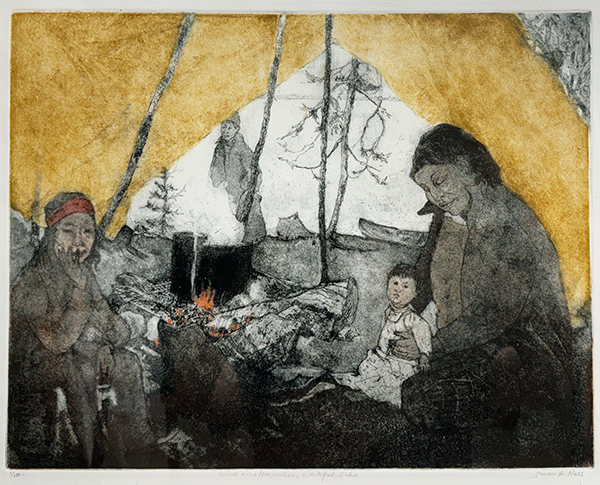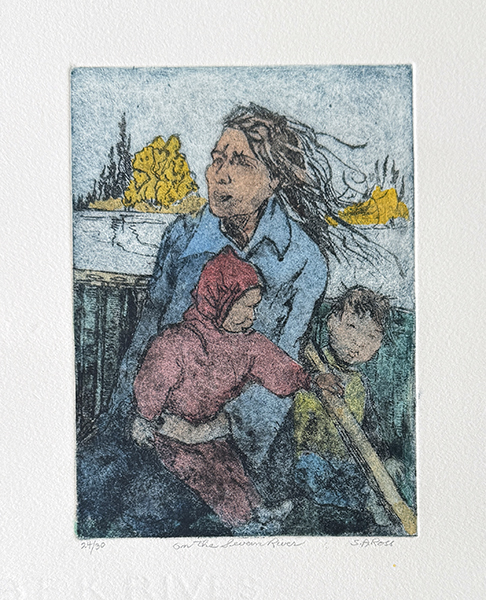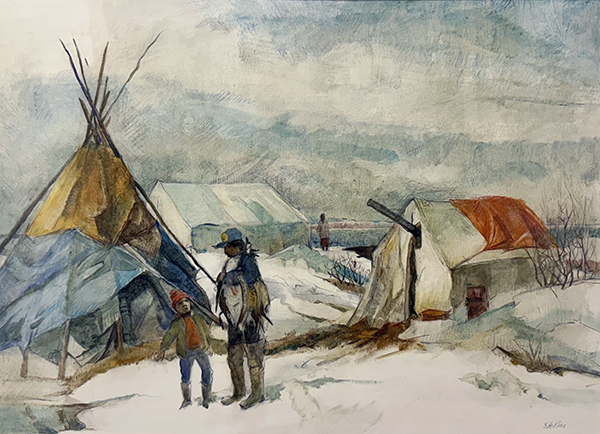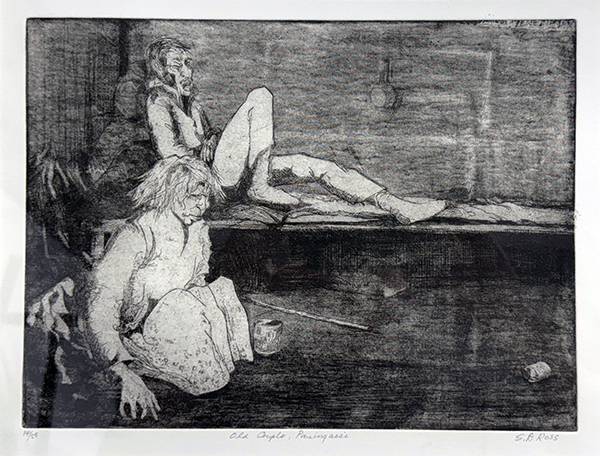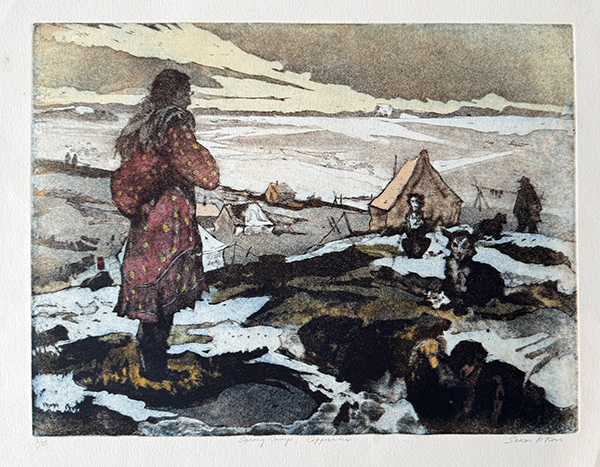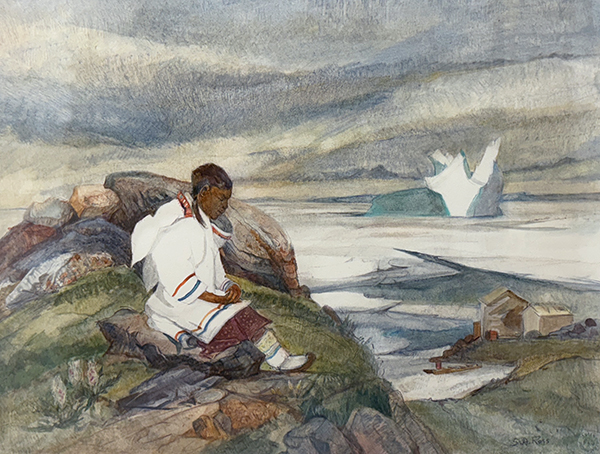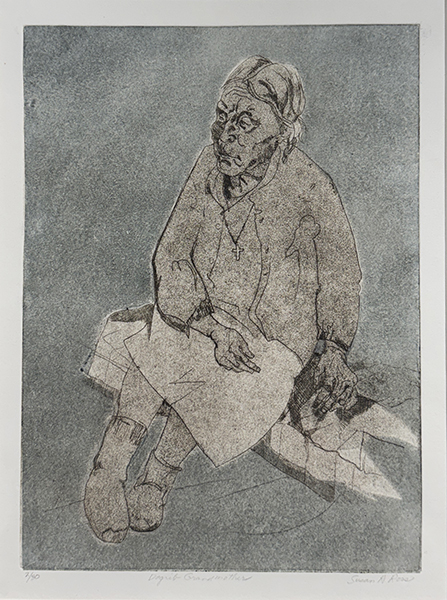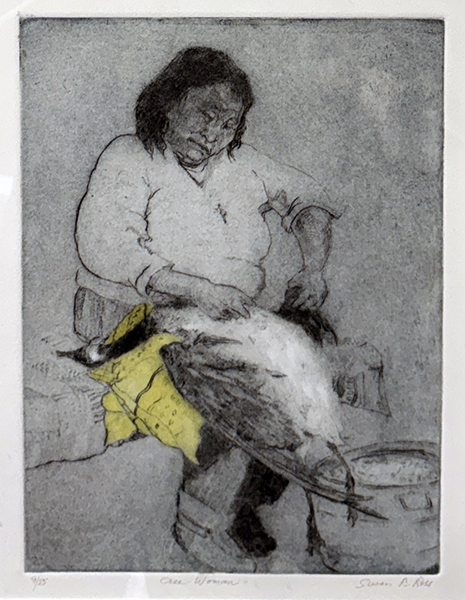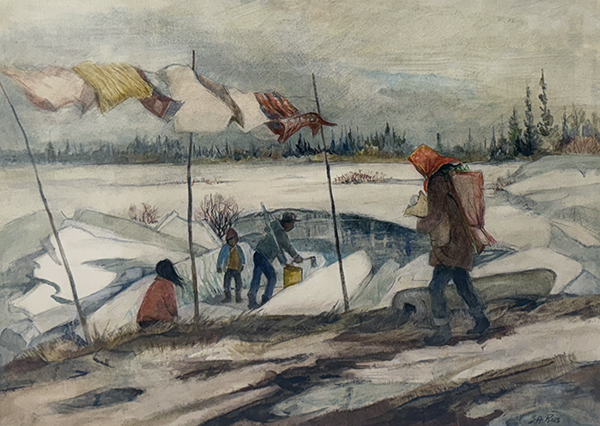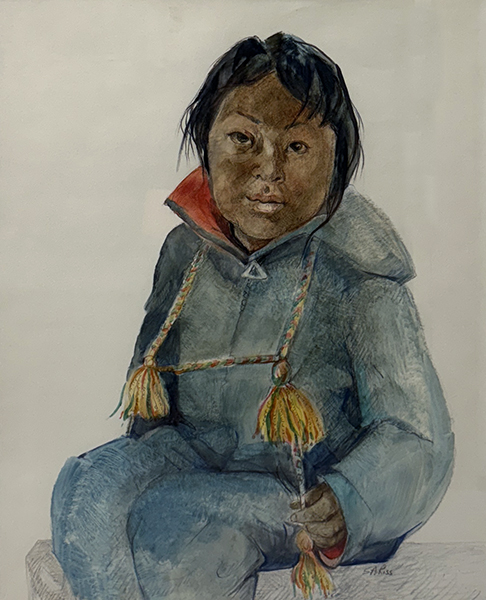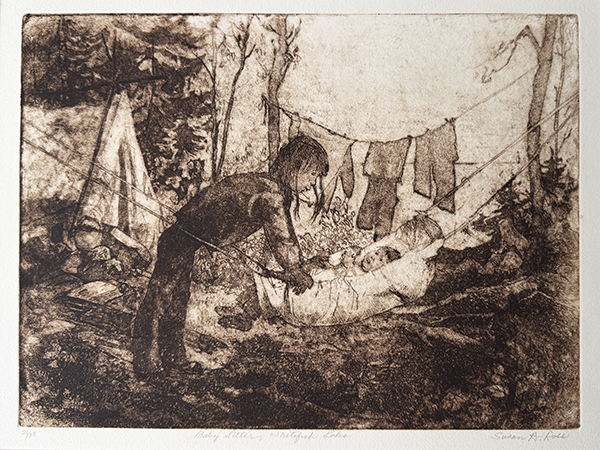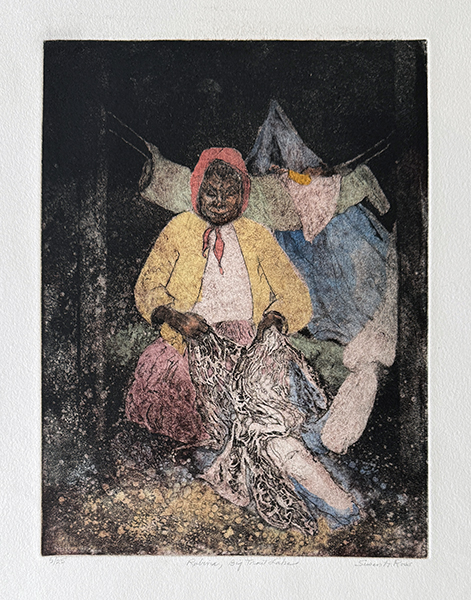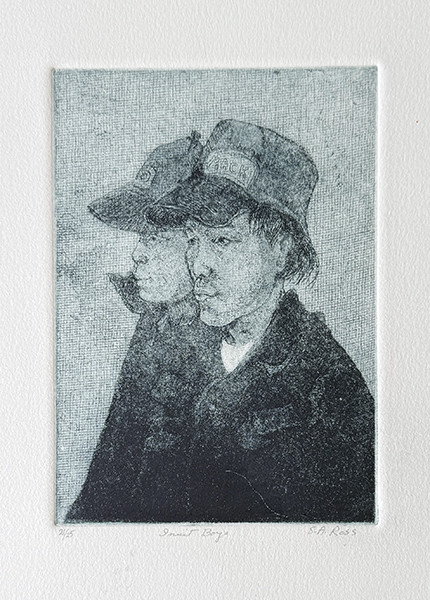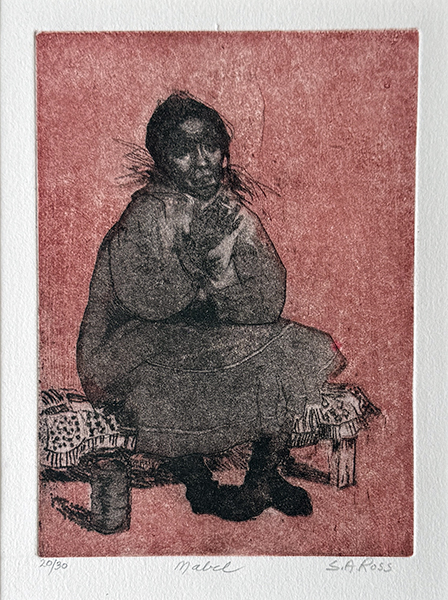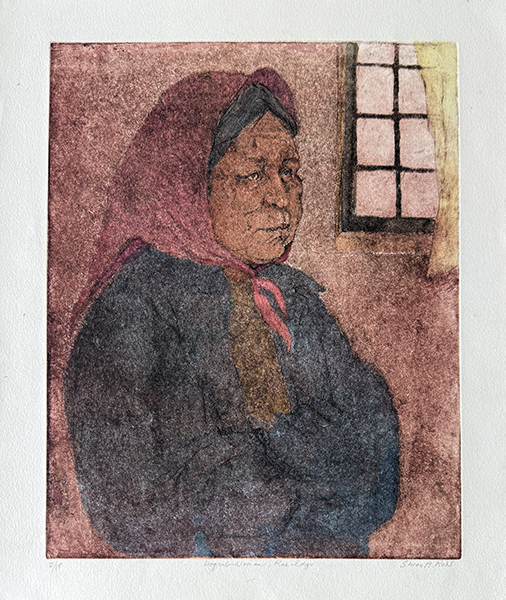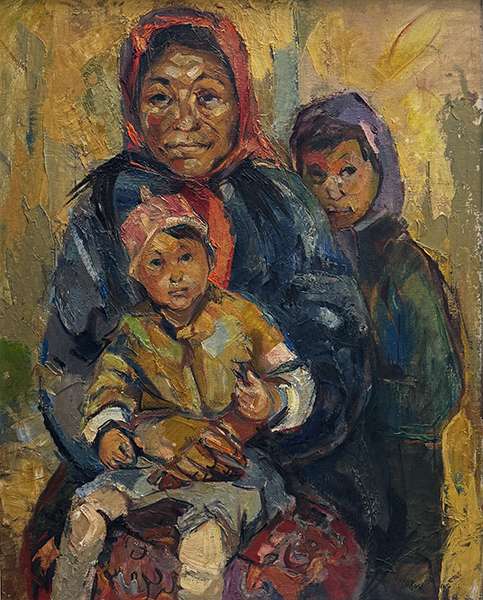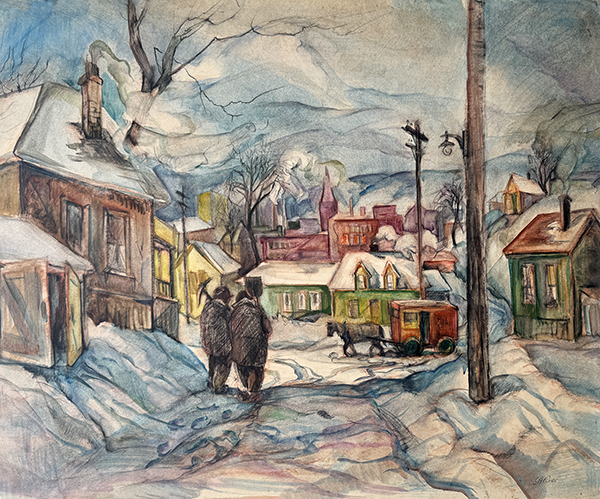Susan Ross
(1915-2006) - Artist Biography
Susan A. Ross was a major figure in the art community of Thunder Bay however she has yet to be recognized on a national level for her truly remarkable achievements as an artist and philanthropist. The niece of the great documentarian, Robert Flaherty whose Nanook of the North remains the standard bearer for depictions of Inuit cultures on film, Ross was a dedicated professional artist, honing her skills via many trips down the shore of Lake Superior and onwards to Silver Islet and Whitefish Lake in the 1940s and 50s. Despite raising a family of six, she allowed little to stand in the way of her art, which evolved unconventionally over her lifetime. She primarily painted landscapes and portraits, honing a “scraping-out” technique that provides texture and richness by revealing layers of colour beneath. As the years went on, her work centred more on the human figure, while retaining her unique modernist sensibility and, because of her understanding of the relationship of the people to the land in the remote Arctic communities that she visited, her work reveals an extraordinary empathy that stands apart from other artists who painted extensively in the Arctic.
Ross’ fascination and respect for Indigenous peoples came after she met the artist Norval Morrisseau in 1961. He inspired her to travel northwards with a view to learning about the First Nations communities surrounding Red Lake, Ontario and the Inuit communities in what we now recognize as Nunavut and Baffin Island. Ross and Morrisseau greatly respected one another as artists and maintained a friendship for years after Jack Pollock, the dealer that would catapult Morrisseau onto the world stage, introduced them to each other in the 1960s. Ross would go on to exhibit extensively at Pollock’s gallery starting in 1964. These shows of paintings on canvas and paper earned her comparisons to other artists who painted in a similar vein and/or subject matter, including Doris McCarthy, Dorothy Stevens, Kathleen Daly Pepper and Adam Sherriff Scott.
While Ross’ work can’t quite be described as ethnographic, throughout the 1960s, 70s and well into the 80 she dedicated her art almost exclusively to capturing a way of life on Baffin Island that was very much in transition, which is why her works are so important culturally and historically. Ross made a point of sketching on location – her works are derived from in-person sittings and she made sure to compensate all of her subjects for their time. The works in this donation show some of the last images of the traditional Inuit way of life – namely, based on the cycles of trapping, hunting and fishing. Ross would often join Inuit community members and try her hand at hunting, sledding, fishing, among a myriad of other activities. As a result, her works are evoke a tremendous amount of authenticity and are historical testaments to a way of life for Indigenous peoples that was about change rapidly – recurring images in her work include people cleaning fish, scraping hide, dock fishing, children with their elders and their pets, tents, cabins, shorelines and the boats that transported people in and out of the communities.
SELECTED COLLECTIONS:
Art Gallery of Peterborough, Peterborough, Ontario
Confederation College, Thunder Bay, Ontario
Lakehead University, Thunder Bay, Ontario
Ontario Institute for Education Studies, Toronto, Ontario
Province of Ontario Art Collection, Toronto, Ontario
Robert McLaughlin Gallery, Oshawa, Ontario
Thames Art Gallery, Chatham, Ontario
Thunder Bay Art Gallery, Thunder Bay, Ontario
Thunder Bay Historical Museum Society, Thunder Bay, Ontario
Tom Thompson Gallery, Owen Sound Ontario
Winnipeg Art Gallery, Winnipeg, Manitoba


